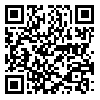BibTeX | RIS | EndNote | Medlars | ProCite | Reference Manager | RefWorks
Send citation to:
URL: http://jdm.tums.ac.ir/article-1-5309-en.html
Background and Aims: Posterior palatal seal is one of the most important areas to support maxillary complete denture. The aims of this study was to evaluate the dimensional accuracy of both direct and indirect relining methods on the maxillary posterior palatal seal area.
Materials and Methods: A maxillary edentulous model was selected. A 1.5 mm layer of wax was placed on the model to create a space for relining material and impression was done by the silicone material and 20 casts was prepared. By putting the wax on the casts and performed of flasking, 20 dentures were prepared. Direct reline method (as Chair side with GC reline) and indirect method (with Acrosoft-TC and firing with Acropars 100) were evaluated. The relined bases were put on the model and the spaces between them in five points (two points on the ridge , two points in the deepest part of palate and one point in the middle of palate) were calculated by the Stereo microscope and each calculations was repeated 5 times and the mean dimensional changes was measured. To compare the groups, data were analyzed using multivariate analysis.
Results: The gap of P.P.S area was between 740.86 and 2356.49 . Direct method (1011.81±60.56) had a lesser gap in comparison with indirect (2056.8±13.13), and both method showed a significant statistic variance (P<0.0001).
Conclusion: Direct method showed a lesser gap in comparison with indirect method. By direct method adaptation of the denture in the P.P.S area would be better.
Received: 2015/04/29 | Accepted: 2015/04/29 | Published: 2015/04/29
| Rights and Permissions | |
 |
This work is licensed under a Creative Commons Attribution-NonCommercial 4.0 International License. |




